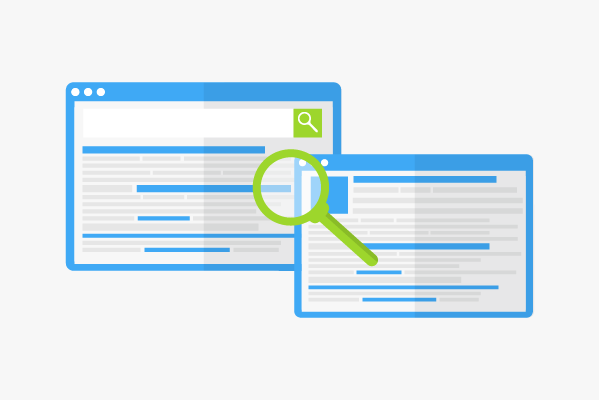Duplicate Content Checker
What is a Duplicate Content Checker?
A duplicate content checker is used to track down duplicates of an URL on the Internet. On the basis of results from analysis, webmasters and SEOs can directly target duplicate content using canonical tags or other measures, as duplicate content prevents a good ranking of a website. From a legal perspective, a duplicate content checker can help to find unlawful copies of content.
Operating Principle of a Duplicate Content Checker
A duplicate content checker works on the same principle as the Google search engine to identify duplicates on the web. It takes a random passage from the copy of a web page and checks whether this page content or similar text already exists on the web. The Google Index is used for this purpose. If websites are found with the same or similar content, the duplicate content checker will indicate this.
The URL where the duplicate content is found and the sections which could be a duplicate get recorded. The sites will be usually compared word for word to each other. In many software products, users can specify how sensitive the duplicate content checker should operate, i.e. whether a duplicate is considered to be as few as four consecutive, identical words or only after six or eight.
Features
Duplicate content checkers differ in their functional scope. Possible examples are:
- Color marking of plagiarism points found
- Repeated and automatic testing of the content of your own websites
- Documentation of the results of the plagiarism scan in permanently recorded reports
- Verification in the background
- Availability of any computer with Internet access
- Payment of plagiarism checks by credit
- Logo of the duplicate content checker on your own website to deter copiers
All-inclusive SEO tools contain a Duplicate Content Checker as part of an entire OnPage Analysis.
Duplicate Content Checker Tools
Basically, you can distinguish between two types of duplicate content checker tools, External Duplicate Content Checkers and Internal Duplicate Content Checkers.
External Duplicate Content Checker Tools
This type of duplicate content checker analyzes the content of a particular URL and checks whether this content or parts of it occurs on other pages on the Web. One of the best-known representatives of this type of duplicate content checker tools is Copyscape, which uses Google and Bing to search for duplicate content.
Internal Duplicate Content Checker Tools
As the name suggests, this type of duplicate content checker only checks internal duplicate content, i. e. within a website. In this way, it is possible to determine whether the content of a website is available under several URLs, thereby creating internal duplicate content. A well-known representative of this kind of duplicate content checkers is Siteliner. The Ryte Software can – among many other features – check websites for duplicate content, too.
Target groups
There are several groups of people, who can benefit from a duplicate content checker. Webmasters want to ensure that their high quality content will not be copied by other people and output as their own work. However, if you want to buy content, you want to ensure that the service provider has done their job well and is not involved in possible plagiarism, putting you at risk of a dispute with the actual owners.
Every website owner should always be able to prove that their content was unique at the time of publication. Through permanent storage of verification records, this can be easily proven, as well as the date of publication. This prepares you with evidence for possible copyright disputes at a later date.
Esentially, every SEO and website operator should have the goal of creating individual and high quality content. Using a duplicate content checker, individual content can be checked in terms of their individuality. Writers also have the opportunity to optimize their content with further tools such as an WDF*IDF-Tool.
Limits
Although duplicate content checkers provide a little more protection against copyright violations, there is no guarantee for certainty. The Google index does not include all websites available on the Internet. If the review mechanism is based on that index, it can be assumed that it will not detect sites that have not been indexed by Google as part of this plagiarism check. Even if a website is in the index, all its sub-pages are not necessarily indexed and therefore not available for the plagiarism check.
Therefore it cannot be excluded that Internet sources may have been copied, although the duplicate content checker indicated no duplicates. Moreover, the software provides no 100& guarantee, because content generated from copying print media such as books or magazines can't be considered. The same applies to website content found in password-protected areas on the Internet, and therefore not indexable by by Google.
Another problem is the sensitivity of the software. If users wish to play it safe, they must adjust the sensitivity to a relatively low number of words. In this case, however, simple phrases with three or four words that may appear under certain circumstances tens of thousands of times on the Internet would generate plagiarism alert messages. Your cost for plagiarism checks would skyrocket. If you set the sensitivity too low, however, to decrease cost, plagiarism may fall through the cracks under certain circumstances if the content was only slightly modified.
Importance for search engine optimization
For search engine optimization a duplicate content checker is an important tool to avoid disadvantages in the Google rankings due to duplicate content.

